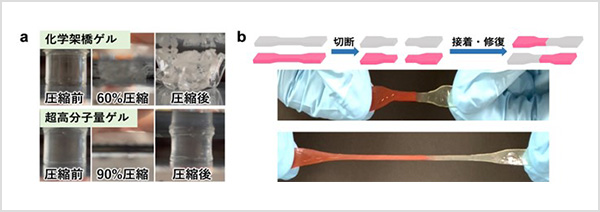二酸化炭素を固体鉱物に変え、より安定した貯蔵を目指す Turning carbon dioxide into solid minerals for more stable storage
2022-10-19 アメリカ・パシフィック・ノースウェスト国立研究所(PNNL)
注入されたCO2が水を置換し、岩石と接触して残留水の極めて薄い膜を形成することで、気体二酸化炭素から固体炭酸塩への変換が起こることもあります。しかし、このような高密度の系は、水たまりと接触している二酸化炭素とは異なる挙動を示す。
薄膜では、水とCO2の割合が反応を支配する。岩石から微量の金属が溶出し、薄膜内と岩石表面の両方で反応する。これが、新しい炭酸塩材料の生成につながる。
実験室では、水と二酸化炭素の比率を調整し、炭酸塩が形成される様子をリアルタイムで観察することができる。また、特定の化学物質がどの時点でどのように存在するかを確認することができ、反応経路に関する重要な情報を得ることができる。
研究者たちは、さまざまな条件下で鉱物がどのように反応するか、特に超薄膜の水膜など、実際の貯蔵場所を模倣した条件下で、知識を深める必要がある。これはすべて、モデリングと実験室での実験を統合的に組み合わせることによって行われるはずである。
CO2がさまざまな鉱物とどのように反応するかを知ることで、地表下に送り込まれたものが確実にそこに留まるようにすることができる。鉱化作用から得られる基礎科学の知見は、実用的なCO2貯留システムにつながる可能性があります。玄武岩パイロットプロジェクトは、小規模な基礎科学と大規模な研究応用の架け橋となる重要な研究拠点である。
<関連情報>
- https://www.pnnl.gov/news-media/converting-carbon-dioxide-minerals-underground
- https://www.nature.com/articles/s41570-022-00418-1
ナノスケール界面水膜におけるCO2無機化機構の分子論的解明 Molecular-scale mechanisms of CO2 mineralization in nanoscale interfacial water films
M. J. Abdolhosseini Qomi,Q. R. S. Miller,S. Zare,H. T. Schaef,J. P. Kaszuba & K. M. Rosso
Nature Reviews Chemistry Published:30 August 2022
DOI:https://doi.org/10.1038/s41570-022-00418-1

Abstract
The calamitous impacts of unabated carbon emission from fossil-fuel-burning energy infrastructure call for accelerated development of large-scale CO2 capture, utilization and storage technologies that are underpinned by a fundamental understanding of the chemical processes at a molecular level. In the subsurface, rocks rich in divalent metals can react with CO2, permanently sequestering it in the form of stable metal carbonate minerals, with the CO2–H2O composition of the post-injection pore fluid acting as a primary control variable. In this Review, we discuss mechanistic reaction pathways for aqueous-mediated carbonation with carbon mineralization occurring in nanoscale adsorbed water films. In the extreme of pores filled with a CO2-dominant fluid, carbonation reactions are confined to angstrom to nanometre-thick water films coating mineral surfaces, which enable metal cation release, transport, nucleation and crystallization of metal carbonate minerals. Although seemingly counterintuitive, laboratory studies have demonstrated facile carbonation rates in these low-water environments, for which a better mechanistic understanding has come to light in recent years. The overarching objective of this Review is to delineate the unique underlying molecular-scale reaction mechanisms that govern CO2 mineralization in these reactive and dynamic quasi-2D interfaces. We highlight the importance of understanding unique properties in thin water films, such as how water dielectric properties, and consequently ion solvation and hydration behaviour, can change under nanoconfinement. We conclude by identifying important frontiers for future work and opportunities to exploit these fundamental chemical insights for decarbonization technologies in the twenty-first century.



